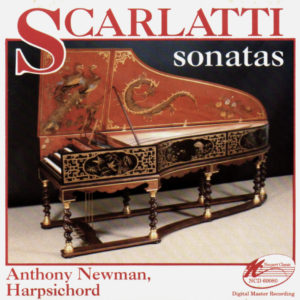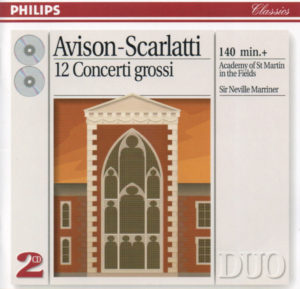There’s a saying, “Good artists borrow; great artists steal.” Deep, eh?
I don’t even know what that means—borrow, steal, lease? It’s another one of those sayings that strikes some chord, some je ne sais quoi, some part of our language center that gives it a seeming profundity. Like using foreign words, especially French or Latin, to sound more erudite and sophisticated, when all it means is, “Duh, I dunno.”
Here we have Charles Avison, 1709-1777, a late baroque musician, church organist, music teacher, and composer. His life is not well documented. His compositions and style patterned after one of his teachers, Franceso Giminiani, perhaps, and as we’ll see, many more. He is best known for his 12 Concerti Grossi after Scarlatti, and a haughty three part critique, Essays on Musical Expression.
I would grant the reader a small excerpt from his dissertation on musical Expression for edification and enjoyment, but no less a lesson on English, at least in it’s Form and Style, from the eighteenth Century. I would also care to effect Emphasis on reading the Meaning, attended by carefulness, while letting pass the highfalutin turns of phrase. Thus it may require a second or third reading to appreciate, with fulness of Mind, the thoughts he expresses.
I would appeal to any man, whether ever he found himself urged to Acts of Selfishness, Cruelty, Treachery, Revenge, or Malevolence by the Power of musical sounds? Or if he ever found Jealousy, Suspicion, or Ingratitude engendered in his breast, either from Harmony or Discord? I believe no instance of this Nature can be alleged with Truth. It must be owned, in deed, that the Force of Music may urge the Passions to an excess, or it may fix them on false and improper Objects, and may thus be pernicious in it’s [sic] Effects : But still the Passions which it raises, though they may be misled or excessive, are of the Benevolent and social Kind, and in their Intent at least are disinterested and noble.
To comment on his second most famous work is not what I’m out to do. I want to comment on his music. Most of the movements, but not all, of the 12 Concerti Grossi are based on the harpsichord sonatas of Domenico Scarlatti. Scarlatti’s sonatas became tremendously popular in England at the time, so Avison saw an opportunity to capitalize on their popularity. He also wrote 60 other concerti grossi, his own sonatas for harpsichord, and a variety of small chamber works. Much of his music appears to be arrangements or adaptations of Giminiani and Rameau as well. This habit of absconding others’ themes wasn’t his only crutch. Some of his compositions were developed working in person along side his contemporaries. It appears he wasn’t much the wellspring of originality.
So, is he a borrower, a thief, or simply an arranger of others’ labors? Is he great or simply good? Or is he an arrogant copycat?
The liner notes put ample attention on the co-opting of themes, not just by Avison, but many composers of the era. It was common practice, but the author of the notes, Stephen Roe, coming from a modern perspective of copyrights, wants to make a big deal out of it. I have some ambivalence towards the practice only because Avison’s talent rides more on the reworking of someone else’s work. Maybe he’s more an arranger than a composer. The flip side is that good arranging requires at least equal talent to original composition, or more in order to escape the original’s pressure to conformity. Think of all the covers that are half-baked rehashes rather than creative reinterpretations. Even today composers use folk tunes or popular music in their work. Whether purposely or subliminally, it’s unavoidable. Unless an artist is completely isolated from the rest of the world, there’s no way influences from hundreds, or thousands, of various sources won’t seep through.
On the first listening to Avison’s transcriptions of Scarlatti’s sonatas, his creativity is evident. First, consider that the sonatas were single movement pieces, mostly fast tempo. A concerto grosso is typically a three to six movement work with a combination of slow and fast movements. Avison’s are primarily four movement—slow, fast, slow, fast. His initial step in writing the concerti was the selection of which sonatas to group together. Then he needed to find enough slow pieces. He did this in a number of ways. One was to adapt a fast piece to a slow tempo. Second was to take slow movements not just from Scarlatti’s sonatas, but additionally from compositions for soloist and continuo. Third was to write his own material. (He may have also used material from yet another composer(s).) Finding solutions to challenges is the heart of creativity. The final consideration is taking keyboard pieces and refiguring the left & right hands parts into individual string parts for violin, viola, and cello. It can’t be done by a direct note by note transcription. His goal was to capture the spirit of the music and transform it into string parts for a couple of dozen musicians—more creativity.
The accusation of theft is unwarranted. Good or great, all artists are thieves, or borrowers, and more importantly, lenders. This borrowing and lending, this recombination of matter is the foundation of re-creation.
All this cross pollination between Giminiani, Scarlatti, Avison, et al., had me look into my music library to see if  I had any recordings of the harpsichord sonatas that match wth those used for the concerti. I have two CDs of Scarlatti sonatas. One by Bob James with his imaginative synthesizer realizations—no matches. The other is a CD by Anthony Newman playing the magnificently grand Magnus Opus harpsichord. Of the twenty-three sonatas on Newman’s CD, only one is a match to any that Avison used for his concerti—Sonata in D Major, K.23, which became the third movement of Concerto #12 in D, Allegro spiritoso. The difficulty in finding matches shouldn’t be too surprising. Scarlatti wrote 550 sonatas.
I had any recordings of the harpsichord sonatas that match wth those used for the concerti. I have two CDs of Scarlatti sonatas. One by Bob James with his imaginative synthesizer realizations—no matches. The other is a CD by Anthony Newman playing the magnificently grand Magnus Opus harpsichord. Of the twenty-three sonatas on Newman’s CD, only one is a match to any that Avison used for his concerti—Sonata in D Major, K.23, which became the third movement of Concerto #12 in D, Allegro spiritoso. The difficulty in finding matches shouldn’t be too surprising. Scarlatti wrote 550 sonatas.
Compare and contrast Newman’s harpsichord version with Avison’s third movement of Concerto #12—
Avison combines two sonatas for the first movement of Concerto #2 in G, a largo and an allegro. Although it’s written as three movements, the first, with its slow-fast form, is effectively two movements. Have a listen to the last repetition of the largo as it leads into the allegro.
Concerto #2 in G, Largo-Allegro—
Try this lively fugal movement from Concerto #11 in G. The violin soloist features prominently alternating with the orchestra while winding around major and minor.
Concert #11 in G, Allegro—
Sometimes I get bored with Baroque and Classical music. I’ve listened to so much of it that I find it too  predictable, or too sweet, or too common. Then something like this comes along to give me a little wakeup call. It’s just enough different to keep my attention and give my ears a little surprise. Avison may not be the most prolific, the most famous, or the most original. Though he may have borrowed most of the themes, he deftly puts his mark on the music. Though he may be a thief, he has created new music from predecessors’ material as everyone does in one form or another, just not as obviously.
predictable, or too sweet, or too common. Then something like this comes along to give me a little wakeup call. It’s just enough different to keep my attention and give my ears a little surprise. Avison may not be the most prolific, the most famous, or the most original. Though he may have borrowed most of the themes, he deftly puts his mark on the music. Though he may be a thief, he has created new music from predecessors’ material as everyone does in one form or another, just not as obviously.
The recordings are well done digital remasters of analog. There is plenty of headroom (no dynamic compression), minimal tape hiss (without artificial EQ), good stereo imaging (possibly only 2 microphones). Solid recording techniques, all that’s needed to forget the sound of the recording so you can relax and hear the music, only the music.
(||) Rating — Music : A ║ Performance : A ║ Recording : A ║ Academy of St. Martin in the Fields, Avison-Scarlatti 12 Concerti Grossi, Philip Classics, 1993 (recorded 1979)
![[art]by[odo]](https://artbyodo.net/wordpress/wp-content/uploads/2011/03/cropped-Header.jpg)